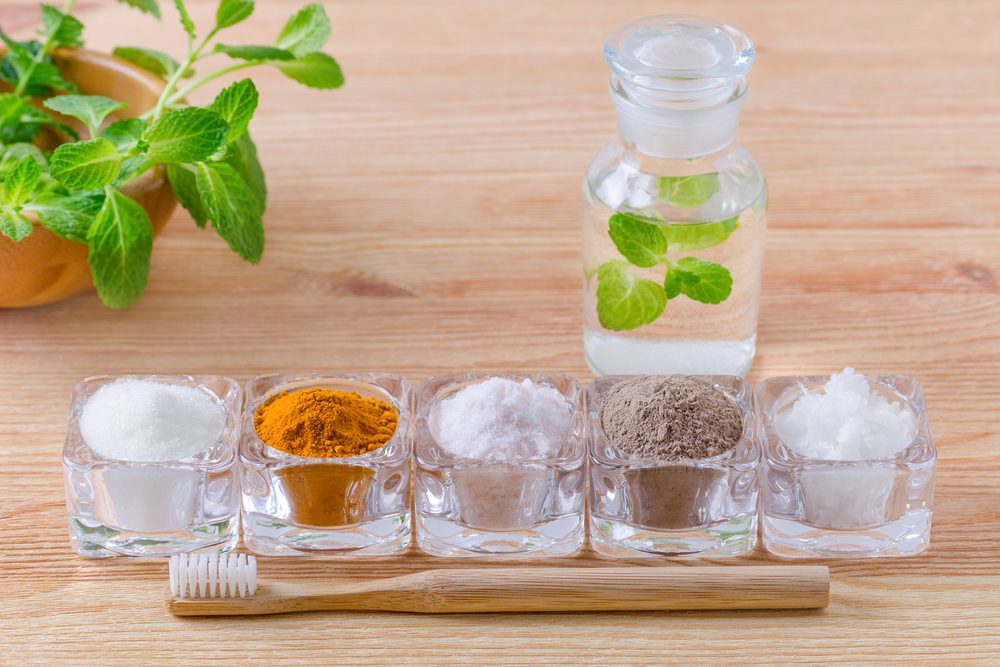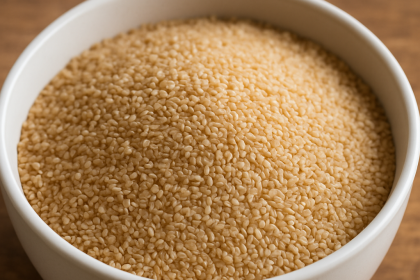That bright yellow powder sitting in your spice rack might be the most underutilized wellness tool in your kitchen. Turmeric has moved way beyond its traditional role in curry dishes to become a genuine superstar in the world of natural health. And if you haven’t jumped on the golden bandwagon yet, you might be missing out on some pretty impressive benefits.
I get it – another wellness trend, another miracle cure, right? But here’s the thing about turmeric – it’s not new at all. People have been using this vibrant root for thousands of years, long before wellness influencers were adding it to their morning lattes and smoothie bowls. And unlike many flash-in-the-pan health crazes, turmeric has some serious scientific backing to support its reputation.
So let’s dig into why this humble spice deserves a permanent spot in your daily routine, and how to actually use it in ways that your taste buds will thank you for.
The science behind the gold
Turmeric gets its superpowers primarily from curcumin, the compound that gives it that distinctive golden hue. But curcumin is far more than just a pretty color – it’s a biochemical multitasker with impressive effects on your body.
The inflammation fighter
At its core, turmeric is an anti-inflammatory powerhouse. Now, you might be thinking, “I don’t have inflammation, so why should I care?” Here’s the thing – inflammation isn’t just about obvious swelling or pain. Low-level chronic inflammation is like having a slow-burning fire inside your body that contributes to everything from heart disease to brain fog.
Curcumin works by targeting multiple steps in the inflammatory pathway at the molecular level. Unlike many pharmaceutical approaches that block just one part of the process, turmeric’s more balanced approach may help explain why it can have widespread benefits without significant side effects.
For those dealing with inflammatory conditions like arthritis, the benefits can be particularly noticeable. Many people report reduced joint pain and improved mobility with regular turmeric use. But even if you don’t have obvious inflammation, you might notice subtle improvements in how you feel overall.
The brain booster
Your brain loves turmeric almost as much as your joints do. Curcumin can cross the blood-brain barrier, meaning it can directly affect what happens in your brain. It boosts levels of brain-derived neurotrophic factor, a growth hormone that helps brain cells form new connections and may even support the growth of new neurons.
What might this mean for you practically? Potentially better memory, improved focus, and even a little extra protection against age-related cognitive decline. Some early research even suggests turmeric might help clear the amyloid plaques associated with Alzheimer’s disease, though much more study is needed in this area.
Many turmeric enthusiasts report a subtle but noticeable mental clarity that kicks in after a few weeks of consistent use – like someone cleaned the windows of your mind.
The mood elevator
Feeling a bit blue? Turmeric might have something to offer here too. Several studies have found that curcumin can boost the brain’s production of serotonin and dopamine, your natural feel-good neurotransmitters.
Of course, turmeric isn’t a replacement for proper mental health care if you’re dealing with clinical depression or anxiety. But for those everyday mood dips that we all experience, a regular dose of this golden spice might help take the edge off and contribute to a more stable emotional state.
The antioxidant advantage
Free radicals – those unstable molecules that damage cells and contribute to aging – have met their match in turmeric. Its antioxidant capacity is off the charts, helping to neutralize free radicals while boosting your body’s own antioxidant enzymes.
This dual action makes turmeric particularly powerful in combating oxidative stress, which plays a major role in everything from visible aging to chronic disease development. Your skin, organs, and DNA all benefit from this protective effect.
Making turmeric work for you
Knowing turmeric is good for you is one thing, but figuring out how to actually incorporate it into your daily life is another challenge altogether. Here’s how to make it work practically, deliciously, and effectively:
The absorption trick you need to know
Before diving into recipes, there’s something crucial you should understand – curcumin is poorly absorbed on its own. Your body tends to metabolize it quickly and excrete most of it before you can get the benefits. Bummer, right?
But there’s a simple hack – black pepper. It contains piperine, which can increase curcumin absorption by up to 2,000%. That’s not a typo – two thousand percent. This is why you’ll often see black pepper included in turmeric supplements and recipes.
Fat also helps with absorption since curcumin is fat-soluble. That’s one reason why traditional turmeric preparations often include ghee, coconut oil, or other healthy fats.
Morning turmeric rituals
Starting your day with turmeric sets you up for maximum benefits. The classic golden milk recipe combines turmeric with black pepper, a fat source like coconut oil, and warming spices like cinnamon and ginger. It’s comforting, delicious, and a perfect coffee alternative if you’re trying to cut back on caffeine.
If you’re a smoothie person, try adding 1/2 teaspoon of turmeric powder to your blend. It pairs surprisingly well with banana, mango, and ginger, and the natural fats in nut butters or yogurt help with absorption.
For the truly dedicated, some people swear by a morning shot of turmeric juice, often combined with lemon and ginger. It’s intense but invigorating, and you’ll definitely feel like you’ve done something good for your body.
Turmeric throughout the day
Beyond breakfast, there are countless ways to sneak more turmeric into your routine:
Add it to scrambled eggs or tofu for a golden breakfast scramble. The fat in the eggs helps with absorption, and the color is gorgeous.
Blend it into salad dressings with olive oil, lemon, and a touch of honey for a vivid yellow dressing that brightens up any bowl of greens.
Stir it into soups and stews during the last few minutes of cooking for color and flavor without overwhelming the dish.
Mix it with hummus or other dips for a colorful appetizer that delivers health benefits alongside the snacking satisfaction.
The evening turmeric wind-down
Turmeric can also be part of your evening relaxation routine. A warm cup of turmeric tea about an hour before bed may help reduce inflammation that accumulated during the day and prepare your body for restorative sleep.
Some people even apply turmeric-infused oils topically as part of an evening self-massage routine, allowing the anti-inflammatory benefits to work directly on tense muscles and joints.
Beyond the kitchen
Turmeric isn’t just for eating. This versatile spice has a long history of topical use for skin health. A simple mask made from Greek yogurt, honey, and turmeric can help calm irritated skin and might even help with stubborn acne due to turmeric’s antibacterial properties.
Just be warned – turmeric will stain fabrics and can temporarily tint your skin if used in high concentrations. There’s a reason it’s been used as a dye for thousands of years.
Finding your ideal dose
When it comes to turmeric, more isn’t necessarily better. Starting small is wise, especially if your digestive system tends to be sensitive to new things. Begin with about 1/4 to 1/2 teaspoon daily, and gradually work your way up if you’d like.
Most research on curcumin’s therapeutic effects uses doses ranging from 500-2,000 mg of curcumin per day. To put that in perspective, turmeric powder is about 3% curcumin by weight, so you’d need quite a lot of culinary turmeric to reach those levels. This is why some people choose to supplement in addition to cooking with the spice.
If you go the supplement route, look for products that include black pepper extract or piperine, and ideally some form of fat to maximize absorption. Time-released formulations can also help your body make better use of the curcumin.
Patience pays off
Unlike medications that might have immediate effects, turmeric works gradually. Many people report not noticing much difference in the first few days, then suddenly realizing after a few weeks that their joints aren’t as stiff in the morning or they’re thinking more clearly.
Give it at least 4-6 weeks of consistent use before deciding whether it’s working for you. The most dramatic benefits often show up after 8-12 weeks as the anti-inflammatory effects have time to build up.
Keep a simple journal noting any changes in pain levels, energy, digestion, or mood. Sometimes the changes are subtle enough that you might not notice them day to day, but they become obvious when you look back at how you felt a month ago.
When to exercise caution
While turmeric is generally considered safe for most people, there are some situations where you should be careful or consult with a healthcare provider first:
Turmeric has mild blood-thinning effects, so if you’re taking blood thinners or have a bleeding disorder, talk to your doctor.
If you have gallbladder issues, turmeric may aggravate them since it stimulates bile production.
Some people experience digestive upset with high doses, particularly on an empty stomach.
High doses during pregnancy aren’t recommended without medical supervision.
These precautions aside, turmeric has an exceptional safety profile compared to many pharmaceuticals targeting the same issues, which is part of its growing appeal.
So there you have it – the golden spice that’s been hiding in plain sight in your kitchen might just be the wellness boost you’ve been looking for. Whether you’re dealing with specific health concerns or simply want to give your body a little extra support, turmeric offers a simple, delicious way to infuse your daily routine with time-tested benefits.
The best part? Unlike many wellness trends that require expensive equipment or exotic ingredients, this one might already be sitting in your spice cabinet, just waiting to be rediscovered. Your brightest days might literally be golden.

















